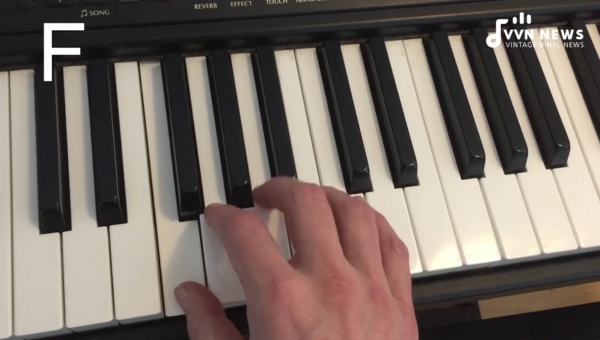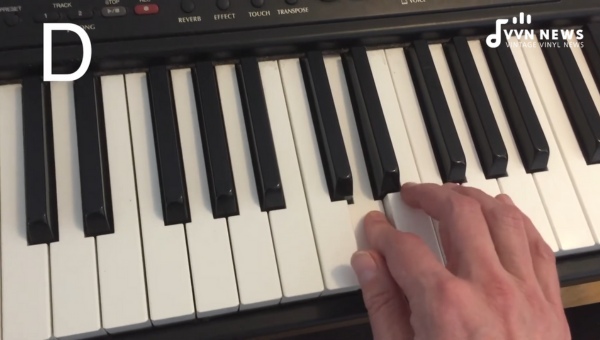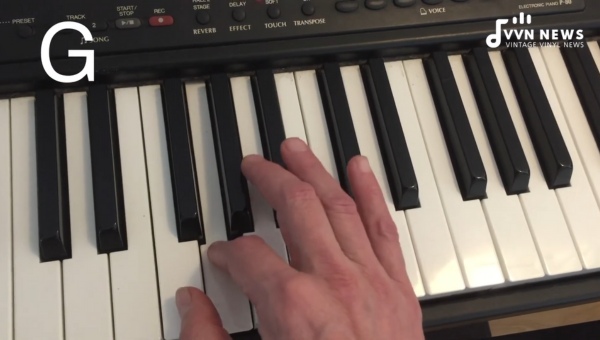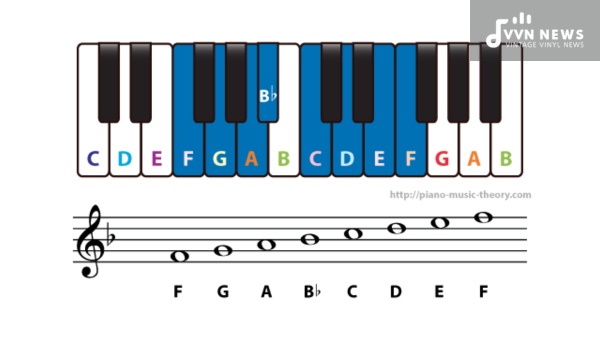Embracing the music world can seem complex, but with our guide “F major scale – a guide to the scales and chords”, we can cut through the confusion and make it easier to understand.
Whether you are a newbie just starting or an intermediate player looking to expand your skills further, it’s essential to familiarize yourself with various scales and chords, particularly the F major scale.
In your musical journey, understanding this particular scale opens up a broad spectrum of melodic possibilities.
As one of the core elements in composition and improvisation, learning this F Major Scale can genuinely help elevate your music experience.
By getting to know all its nooks and crannies, from its unique structure right down to how it interacts with diverse chords, you will surely be a step closer to achieving your musical aspirations.
What Is the F Major Scale and Its Importance in Music?
The F Major Scale is an indispensable component of music theory that forms the backbone for many compositions.
Despite its dashed presence in most popular genres, it plays a defining role in classical and jazz music.
This scale comprises seven unique notes: F – G – A – Bb – C – D – E returning to F, constituting an octave.
It consists of two half steps (between A-B♭ and E-F) and five full steps (between F-G, G-A, B♭-C, C-D, D-E), creating a distinctive pattern.
Being the subdominant of the C Major scale (the primary key employed in Western music), it paints a fresh but essential color on the musical palette.
Being acquainted with the F Major scale equips you with an extended melodic and harmonic landscape.
Also Read: G Major Scales And Chords [Expand Your Musical Understandings]
Importance of F major scales in Music
The importance of this mesmerizing scale in music can’t be overstated.
Numerous notable melodies across different genres have been formulated around this particular scale due to its somewhat uplifting quality that can instill a sense of joy, wonder or even melancholy.
It offers excellent flexibility while composing as it blends with other keys effortlessly due to sharing several common chords (link to chord chart).
This distinctive feature enables songwriters/composers to experiment with various composition styles without seeming overly complex or taxing for the listener’s ear.
Furthermore, proficiency with F Major Scale assists you when transposing songs from one key to another — a valuable skill for musicians aiming to adapt their music according to various vocal ranges or instrument tunings.
Grasping this major scale propels your musical expertise forward, easing your journey through intricate notations and enhancing your overall appreciation of music’s language.
From expanding your repertoire as a musician to recognizing patterns more readily, each strain played through the F Major scale will echo back its worth.
How to Play the F Major Scale on Different Instruments

Playing the F major scale varies across different instruments. Let’s dive into the specifics for guitar and piano – two of the most popular instruments for music enthusiasts like yourself.
Guitar
Musicians often find it simpler to start learning scales on a guitar because of its straightforward fretboard patterns.
For beginners trying to master the F major scale on a guitar, follow these steps:
- Locate the first note (F) on the 1st fret of your low E string.
- Hit an open string for the next note (G).
- For A, locate it on your guitar’s 2nd fret of G.
- Play B flat on your 3rd fret of G.
- For C, utilize an open string.
- Find D directly on your guitar’s 2nd fret of C.
- Score E as an easy open string.
Remember, practice is key. The more frequently you rehearse this scale pattern, the easier it will be to slide through each note effortlessly.
Piano
While guitars rely heavily on memorizing fret patterns, pianos lean more into visual cues from their black and white keys.
Let’s explore playing the F major scale using correct fingering techniques:
- Start with your thumb (1) on Middle C.
- Cross your middle finger (3) over to play D.
- Use your thumb (1) again for E.
- Press down with fingers 2-3-4 for F-G-A respectively.
- Play B flat with pinky finger (5).
- Reverse back down using fingers 4-3-2-1 respectively and cross middle finger over to again play D followed by C with thumb.
In both instances, using correct technique and consistent practice will aid in achieving proficiency in playing these scales in no time.
The world of music can seem vast and intricate, but with tools and guides like these, it becomes accessible for all those with dedication and passion.
And remember, the magic is not just in playing the F major scale, but also in the multitude of melodies that can be created using it.
Also Read: F Sharp Major Chords [Boost Your Guitar Skills Today]
What Are the Basic Chords in the F Major Scale?
The F Major scale is composed of seven unique notes, providing us with seven chords associated with this scale.
These chords are the foundation to any music piece written in F Major, contributing strongly to its identifiable sound. Here they are delineated:
- F Major: The first chord in this scale is the home base: F, A, C
- G minor: Moving a step up, we encounter G minor: G, Bb, D
- A minor: The third chord in our journey is A minor: A, C, E
- Bb Major: Bright and uplifting Bb Major comes next: Bb, D, F
- C Major: The dominant 5th chord of this scale is C Major: C, E, G
- D minor: A rather melancholic chord – D minor: D,F,A
- E diminished: To wrap things up we have a tricky sounding E diminished: E,G,Bb
You will notice each of these chords has its flavor and personality that can evoke different reactions when heard alone or in combination with others.
How Does the F Major Scale Relate to Other Scales?

Scales are the backbone of all music. The F Major Scale can become a fascinating study when you start delving into its relationship with other scales.
When it comes to other major scales, there’s always a key signature involving certain sharps or flats. In contrast, the F Major Scale precisely features its one characteristic flat – B♭.
Interacting with Relative Minor Scale
One critical relationship that the F Major Scale has is with its relative minor scale – D minor.
Just as your DNA shares similarities with your kin, these two scales share the same key signature.
You might be wondering how this relationship can enhance your musical prowess!
Well, recognizing this connection can greatly expand your repertoire and improvisation skills by allowing you to interweave major and minor tonalities seamlessly.
Also Read: B Flat Major Scale [Exploring This Warm & Mellow Key]
Moving Across Parallel Scales
Next in line is the curious link between F Major and its parallel scale, F minor.
Although they bear similar names and both originate from the same root note – ‘F’, their sonic identities are strikingly disparate due to their distinct key signatures (F minor sports four flats).
When it comes to blending scales in your playing, appreciating these relationships is somewhat like learning a new language.
Recognizing how the same word can bear different meanings in varying contexts can enrich your vocabulary remarkably—a case no less true for scales!
Comparing these different ‘flavors’ side by side imparts depth into your improvisation and composition skills.
An understanding of these relationships will undoubtedly sharpen your musical intuition, enabling more nuanced playing and fostering a rich tonal landscape in which you can paint with sounds!
Common Progressions Using F Major Chords
In the realm of music, chord progressions form the backbone to any melody.
They provide structural integrity and a sense of direction. For any music enthusiast or budding artist, a workable comprehension of common progressions using F major chords is an invaluable tool to take their skills to the next level.
I-IV-V Progression
The I-IV-V progression forms the bedrock of countless pop and rock songs.
In F major, this translates to F-Bb-C progression. Using these chords in sequence can give your song a steady, harmonious flow that’s easy on the ears.
ii-I Progression
This is another common progression in major keys. In terms of F major, it becomes Gm-F progression.
This gives your music a contemplative feel with just enough tension to engage listeners without overpowering them.
vi-IV-ii-V Progression
Now let’s put various chords together for more complex sequences. One such instance in F major would be Dm-Bb-Gm-C.
This frequently used pattern creates an exciting dynamic in songs and is very popular among genres from pop-rock to hip hop.
Circle of Fifths
Often considered as the fundamental path controlling movement in music, this sequence can contribute incredibly compelling tension and release moments to your pieces – perfect for those wishing to add depth or sophistication.
Practice is key here: mix up these progressions, come up with rhythms that suit you and observe how they transform the mood entirely.
Remember that there aren’t rigid rules – creativity is at the heart of music. Remain open to exploring and discovering new combinations. Happy strumming.
Also Read: F Sharp Major Scale [Add Unique Tones To Your Musical Palette]
Highlights of F Major Scale in Famous Songs

Pianists and guitarists have used the F Major scale to create some of the most memorable songs in history.
Below, we look at notable songs that prominently feature this scale.
Tom Petty’s “Free Fallin'”
“Free Fallin’” by Tom Petty, a sonic reflection of heartache and liberation, is composed entirely within the F major scale.
From the moment you hit its opening riff, to when you jam along with its chorus, you can feel the rich embodiment of F Major notes coursing through your fingertips.
The Beatles’ “Hey Jude”
Arguably one of The Beatles’ greatest hits, “Hey Jude” incorporates the fluidity of the F major scale.
Its famous ‘na-na-na’ coda shimmers with countless melodies molded from this key – crafting an atmosphere that is both intimate and grand.
Billy Joel’s “Just The Way You Are”
Here’s another classic – “Just The Way You Are” by Billy Joel, a song that showcases his signature piano technique.
This melodious piece is a treasure trove for anyone familiar with or just learning about the richness of the F major scale.
Each song above provides fertile ground for understanding how versatile and emotive the F major scale can be when appropriately utilized in music composition.
Its utilization across various genres adds proof that it has an appealing universality among musicians.
Also Read: B Major: The Scale And Chords [Guide To This Bold & Beautiful Key]
FAQs About F major scale
Why is the F major scale considered important in musical studies?
The F major scale is considered significant due to its widespread use and compatibility with various musical genres. Its tones can resonate with vivid warmness, making it a preferred choice by many composers.
What is the sequence of notes in an F major scale?
The F Major Scale follows this sequence of notes: F – G – A – Bb – C – D – E.
How many sharps are there in the F major scale?
The F major scale does not contain any sharps. It has one flat which is Bb.
How does the key of F major relate to other scales?
The key of F major shares similar notes with its relative minor, D minor, and other scales within its circle of fifths.
Can you suggest some popular songs written in the key of F Major?
Many popular songs are written in the key of F Major, including “Hey Jude” by The Beatles and “Every Breath You Take” by The Police.
Conclusion
Ultimately, any time invested in mastering the F Major Scale is time well spent.
Your appreciation and understanding of music, be it classical, rock, pop, or jazz, can dramatically improve just by getting to grips with this fundamental scale.
It opens up creativity and provides robust building blocks for improvisation and composition.
Remember to keep practicing – you’re not alone on this journey! Listen to songs in F Major, play along with them and before long, you’ll start experiencing music in a whole new light.








